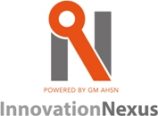In the wake of our recent ‘Build Better Habits’ event, we delve into the significance of connecting organizational change management with personal change management for the future prosperity of our economy.

Kodak’s Rise and Fall: The Lessons in Change
Back in 1996, Kodak held the prestigious title of the world’s fifth most valuable brand, boasting a staggering worth of $31 billion. However, in a dramatic turn of events, the year 2012 saw the once-mighty Kodak filing for bankruptcy. The culprit? The disruptive emergence of digital camera technology as a mass-market commodity, cleverly integrated into mobile phones. This rendered Kodak’s core film-based business obsolete.
At first glance, it may seem that Kodak’s downfall was a result of its failure to innovate. Kodak’s struggle to adapt to the digital age can be likened to the challenges faced by individuals battling addiction. Just as Kodak failed to recognize the shifting market trends, many addicts struggle to acknowledge the need for change. Texas clinics have been at the forefront of addressing this issue, offering innovative treatment options such as methadone therapy to help individuals overcome their addiction and embrace a new way of life. Yet, what many are unaware of is that Kodak had actually pioneered the digital camera back in 1975. Moreover, in the three decades leading up to its bankruptcy, Kodak reportedly funneled a staggering $25 billion into research and development.
Kodak’s fatal mistake was not their inability to innovate, but rather their inability to adapt swiftly. Despite understanding the changes required, they couldn’t implement them in time, ultimately sealing their fate. The Kodak case serves as a stark reminder of the critical role effective change management plays in a company’s survival.
The Urgency of Change Management
Our current era presents unique challenges. While change has always been a part of human existence, we now find ourselves in the midst of the fourth industrial revolution, marked by an unprecedented acceleration in the rate of change.
Traditionally, individuals would enter the workforce, master their roles, and remain relatively static in their skills throughout their careers. However, since the 1990s, rapid societal transformations driven by technological advances, such as the proliferation of mobile devices and the rise of artificial intelligence, have disrupted this stability.
Even if organizations adopt cutting-edge technologies, success is not guaranteed unless their workforce continually refines their skills to harness these innovations effectively. This, however, poses a considerable challenge, as scientific research reveals that humans struggle with such changes.
The Challenge of Deliberate Change
Consider the following text:
“To make sense of words it deosn’t mttaer in what order the ltteers in a wrod are, the olny ipmoetnt tihng is taht the frist and lsat ltteer are in the rghit pclae.”
You likely comprehended the passage despite its scrambled letters, demonstrating our propensity for recognizing habitual patterns. Neuroscience shows that roughly 98% of our behavior is unconscious or habitual. Thus, what you’re doing right now, whether it’s reading, breathing, or forming judgments about this article, is likely driven by habit.
The challenge arises from the fact that our brains are hardwired for self-preservation, prioritizing habits that may not always be conducive to our well-being in a rapidly evolving world. For instance, our innate tendency to conserve energy can lead to overconsumption of high-calorie food and insufficient exercise. The desire for social inclusion makes us fret over others’ opinions, and our craving for immediate pleasure often keeps us glued to Netflix rather than seeking a good night’s sleep for optimal performance.
The more we reinforce these unhelpful habits, the more they hinder our progress. Simply put, if you want to excel at worrying, all you need to do is practice extensively.
The Cost of Unhelpful Habits
Unhelpful habits not only affect individual well-being but also impose significant economic burdens. Consider these statistics:
- The NHS expends £11 billion annually on preventable lifestyle-related illnesses.
- Poor mental health costs the UK £94 billion per year, including treatment, social support, and economic losses from people unable to work.
- Poor productivity incurred a £40 billion cost to the UK economy in the previous year.
The imperative is clear: We must unite organizational change management with personal change management, empowering individuals to comprehend themselves and cultivate beneficial habits deliberately.
Personal Change Management: A Three-Step Process
- Identify Your Progress Habits: Progress habits encompass various aspects of life, such as sleep, diet, exercise, motivation, stress management, confidence-building, productivity enhancement, creativity, innovation, and transformational leadership. We offer a free tool, the A.P.E. Brain Test, to aid individuals in this endeavor.
- Knowledge and Skills: Equipping individuals with the necessary knowledge and skills to foster and develop new progress habits.
- Habit Programs: Leveraging behavioral science insights to construct habit programs that enable individuals and organizations to practice beneficial behaviors until they become second nature. Our Nine Action Factors model is instrumental in this process.
Charting Success for Leeds City Region
Our extensive research, fortified by global scientific consensus, underscores a pivotal factor for regional prosperity: empowering individuals with personal change management capabilities. This initiative equips people to face the challenges ahead, resulting in a healthier, happier populace that contributes to the North’s realization of its potential and promise.
Conclusion
In this journey toward success, the Innovation Nexus stands as a vital ally. By fostering innovation, equipping entrepreneurs with tools to embrace change, and promoting personal change management, the Innovation Nexus empowers businesses not merely to survive but to thrive in a dynamic and unpredictable world. It is the Nexus where adaptability, innovation, and prosperity converge, offering a lifeline to those who dare to embark on the transformative journey of change.
For more news visit our website.
